“Cosmonauts” in Chile: how we did the entire IT infrastructure for four telescopes in the Andes
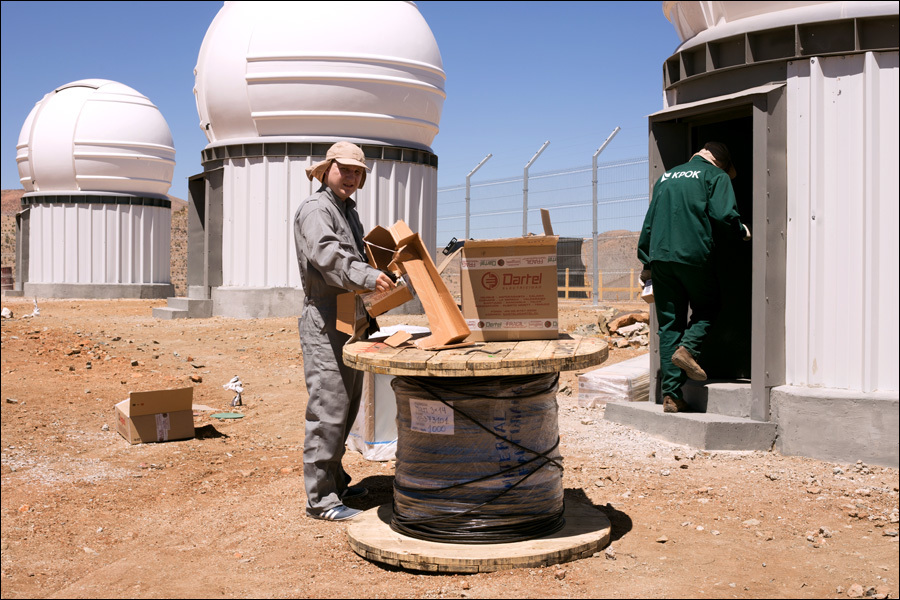
Andes, height 1564 meters, the purest mountain air, sharply smelling of diesel fuel. A bare rocky platform, four domes and three containers - domes for telescopes, and smaller containers - residential for the watchman or engineers, a bathroom, a workshop the size of a bathroom, plus a dome for the rack Tsiski and the UPS battery line. Around - a fence of metal mesh.
Carlos, a local resident, walks around the site and swears colorfully in Spanish with an Indian accent. Carlos is now in energy saving mode, he has no work. Therefore, on autopilot, he collects all the stones within a radius of 30 meters and lays cracks with them. For example, under a fence so that small animals do not crawl.
Judging by the fact that all the wells of our future cable route from the power unit to the domes were densely and very carefully laid with the same stones, the work ahead was interesting. As we already knew from the introductory note, they forgot to put the broach into the corrugation, and they have to dig it out.
Simple work, they said. We need a sysadmin, they said. Carlos saw us, said hello and immediately warned in his broken Spanish:
- You see the clouds - run. If it starts to rain, that's it, it's all over!
But we did not understand the accent, so we did not understand it.
Where did the telescopes come from and why did you need to go to them from Russia
One of our Russian customers decided to build a miracle device to help the astronomical community, where he himself is. In the booklet that we were given, it was written about the following: “A cool point for the community, quality observations, good technology,“ Astronomy on demand ”for everyone to chat!”
The best location for such designs is where the stars are best seen, then eat in the mountains and with clear skies, so that a minimum of cloudy days. In the Andes there are areas where clouds are only 3-4 days a year, the air is clean, the sky is good. Therefore, so far. A place on the southern border of the Atacama Desert. Fully clear nights (suitable for astronomy and observing very faint objects) from 280 to 310.


The soil is rocky, small fractions are much larger than sand, so there is no dust. The domes at the top of this photo are our position:

The project was done before us.
To put it simply, it works like this:
- There is a power subsystem that can start the diesel generator itself, controls battery charging and periodically checks the diesel engine by starting the engine. There are solar panels that work all day, power the entire system and charge the battery line, since most work takes place at night. There is a rack where there is iron, which all this correctly commutes and controls. In the same subsystem there are a bunch of sensors transmitting different telemetry. Entrance - diesel brought (rarely) and solar energy. An exit - autonomous food on all other systems of the platform and telemetry to the control unit. The system does everything automatically, but can also accept manual commands from the management console.
- Management system and GUI to it. On the site, there is only the integration server itself, which receives commands and scatters them on subsystems, plus it knows how to give out console to specific nodes, if necessary. The main element is the remote control of the telescope and the planning of its tasks, so that people can far, far, point it at the desired object and view it without climbing to our site with their feet.
- Communication In the future, it is planned to establish a radio relay line at the facility. The reciprocal end of the radio bridge will be on the fiber node in the foothills. In the meantime, a special LTE directional antenna with a modem pair that looks at the base station several tens of kilometers in a straight line. Fortunately, here in the mountains, the BS is switched to the “coverage” mode, and not the “many subscribers”, and there are no subscribers. Therefore, almost the entire band, without social interference, is ours.
- Telemetry. These are security cameras, a camera in front of the equipment rack, various sensors and penetration detectors, data on the status of equipment. Everything is collected from the perimeter and brought into the server, which sends them to the remote machine for control.
- Switching - a kilometer of power cables VVG-NG-LS 3x2.5 and a kilometer of twisted pair. Connect the domes to each other and to the power unit. Everything is hidden underground and additionally shielded.
The local contractor mounted the domes, installed solar panels (stationary - we calculated the slope for the local winter) and laid cable channels. And immediately he fell asleep safely, so that rodents would not climb and we could not put in the cable. Earlier, a grader paved a road suitable for an SUV.
Here are the domes:



Since the customer had to jump across two language barriers at once, they decided to entrust the final assembly and commissioning to those who could at least explain which shaitanama the ripper was missing. The four of us were asked if we would like to spend 3 weeks in February in Chile with an unpretentious job, just plug in a cable. We suspected that everything was not so simple, but Chile was not to be missed.
So the four of us were in the mountains, two and a half hours drive from the proud town of Avayo.
Here's what we found when we arrived:
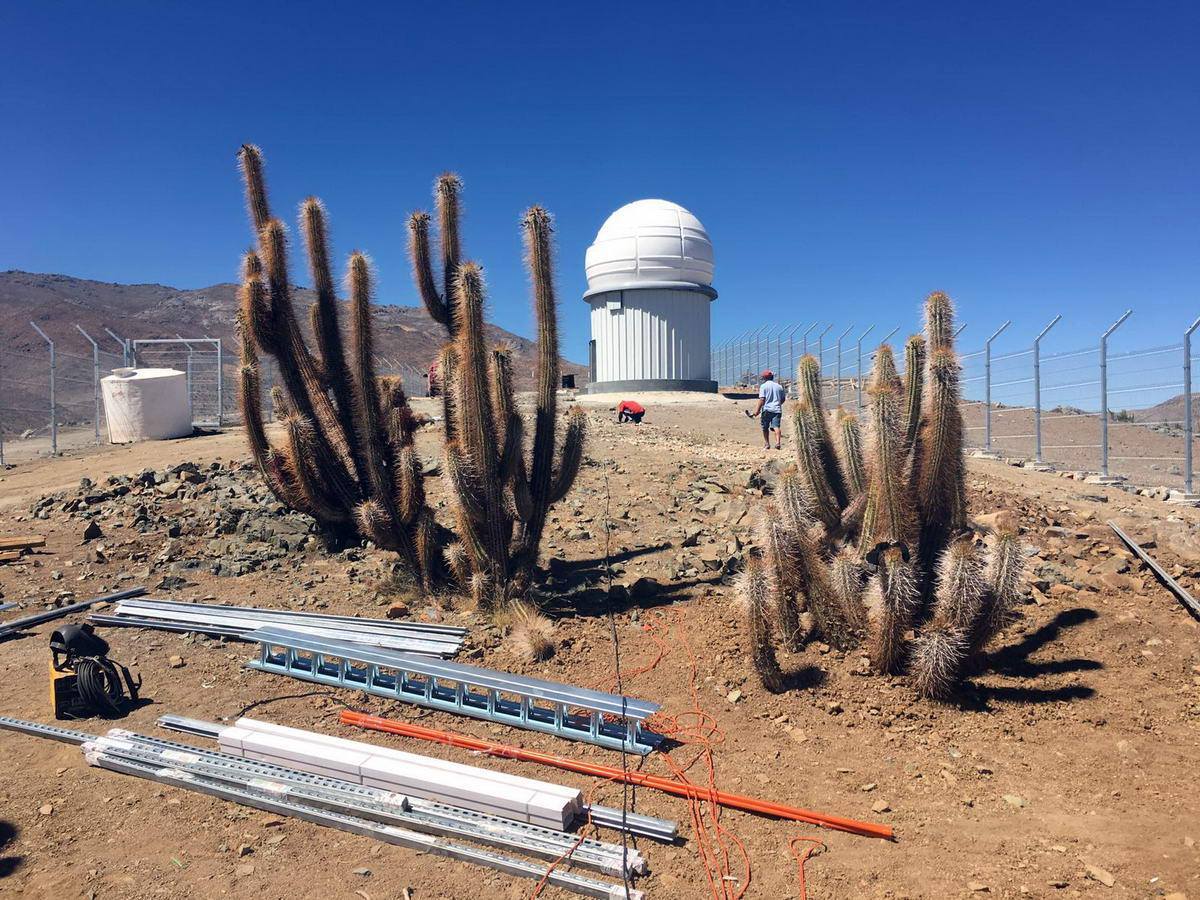
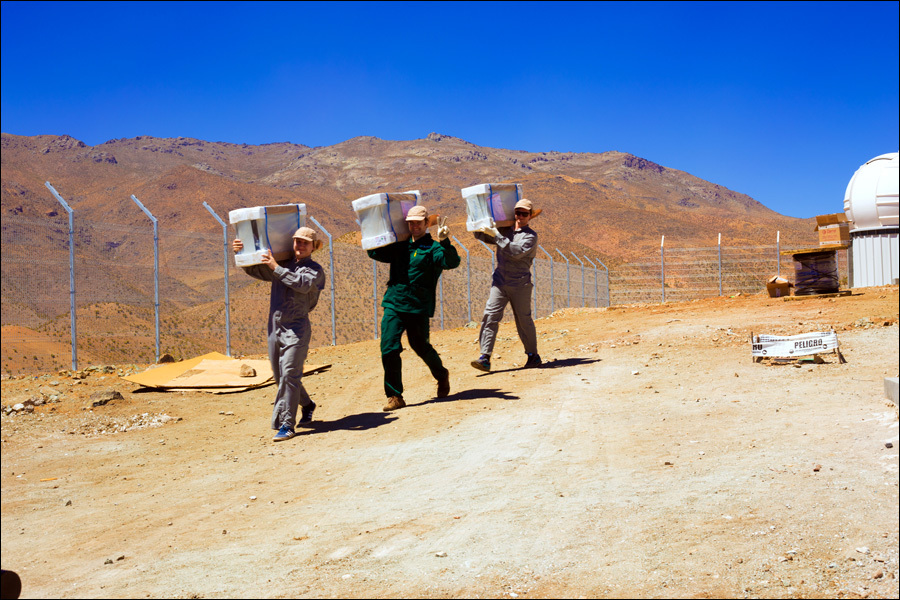
Workshop, where the table had to be made of transport packaging:

The photo is already a happy moment when we deployed laptops and connected to the power. For a start it was necessary to get to the place.
the trip
We started as usual, in the already became home Sheremetyevo. 30 kilograms of fragile equipment and tools with each, wildest advantage, surcharge for luggage (everything large flew by pallets by a transport company in a week).
Transplant in Paris, walked around the airport for an hour and a half, replenished the knowledge base on free sockets - everything will come in handy. The next 14 hours - a transatlantic flight in the back seats at the toilets, attempts to kill us with round-the-clock uninterrupted food. Hello Santiago.
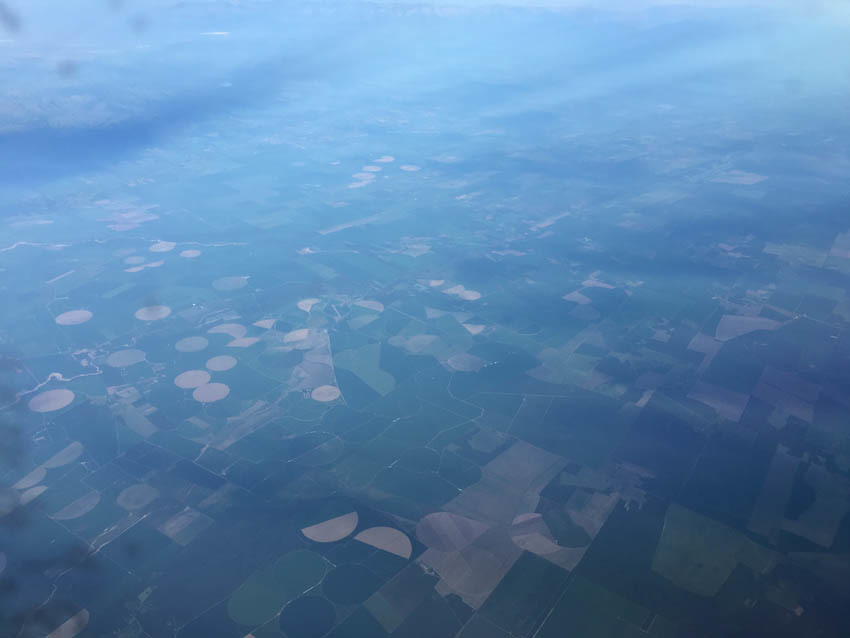
Their fields are round so that it is more convenient to irrigate with automation
Only Alexei knew our language, at the level of the basics of the school curriculum (“My name is Alexey”, “What is your name”, “Come on, work!”). And also Google Translate (but there was no Internet). It was assumed that at the facility we would only need a Russian and a Russian mat with gestures to control a team of laborers. But the object still had to be reached.
On the plane we met a Russian-speaking woman Tatyana, who has been living in Argentina for 20 years. She helped with car rental and worked a bit for translators. We should have been met by a specially trained person, but it turned out to be the driver of the contractor, who, alas, knew only Spanish.
The driver immediately handed us local SIM cards so that we would not get lost. But he warned that they would begin to work only in the evening - long activation after the first installation on the phone. At the car rental company, we were immediately pleased that the ordered pickup was missing, from what our luggage will fit into, there is only a Toyota. Given the jamb of a car service, there is a small discount on a car, but it still costs almost twice as much. Here is one:

They took a car, bought food, and drove to a local household store on the outskirts of the city, like our Leroys — to buy about 50 kilograms of all kinds of other things, which are very necessary at the facility, which you can get. We didn’t find where to cash money (the ATM didn’t see our cards), therefore they paid with a card (it turned out in the household). Later this played a bad joke with us: highways are paid, they cost 50–100 rubles in our opinion, but toll points are every 50 kilometers. Strictly cash. Therefore, for the first time, Lyokha made eyes like a cat from Shrek and said something like: “American dollars, it’s time to be your favorite!” The policeman with disgust on his face took a portrait of the president of a foreign country and instead of surrendering showed: “Drive!”
Immediately they took an awning for a car, a lot of water, sunscreen (in Chile in the mountains it’s dangerous - you need to get fifty right away, otherwise you will turn red like cancer already in the evening). After the first PVP, realizing their mistake with the currency, they began to knock on the houses of a village. They did not open to us. As a result, they changed the money only at the gas station. By the way, the local saw the cans at the back, immediately jumped into the body and started pouring into them. Also at the level of reflexes. There wouldn’t be a tank, there are no gas stations in the mountains.
By the way, the rights were accepted by the Russians when renting, and we didn’t show them to anyone else. They took turns. On large roads, they simply attached themselves to someone traveling in the right direction, and repeated all the maneuvers. We were warned that it is impossible to scam, the gayts are hiding in the bushes.
For several hours we drove along the road past the ocean and admired everything in a row. We were 600 kilometers north of Santiago, near the city of Ovaglia. We drove into the valley of the Hurtado River, began a mountain serpentine and active steering. The road is paved in some places, but not in some places. Where there is no asphalt, the surface is wetted, then the grader with a ladle leveles, it turns out the skating rink is no worse than asphalt. Judging by the fact that they warn about the hotel over 75 kilometers, some were already lost: the

town of Avayo itself became the point where we bought the little things from the household. From the unusual - there are quite a lot of police: 4 people on each corner, and their cars are framed by nets from good fellow citizens.

The hotel pleased us with the fact that it offers a high-class ecological vacation. Translated into human, this meant:
- there is no internet;
- no tv;
- the phone does not catch;
- but there is braking Wi-Fi at a speed of 2G in the lobby;
- tractors in tanks carry water here;
- there are healing cacti.
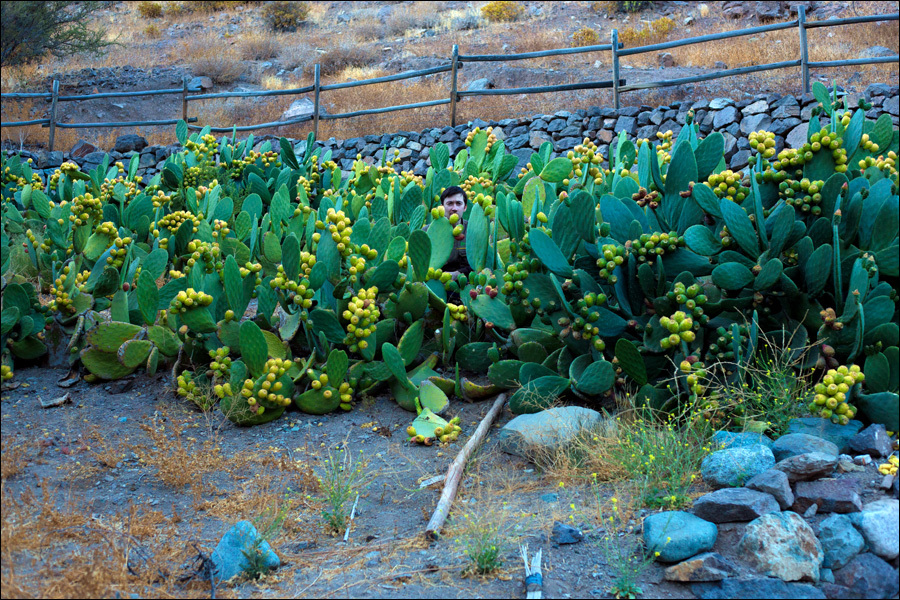
From the hotel to the position on the first day we drove an hour and a half, then we learned and got in an hour.
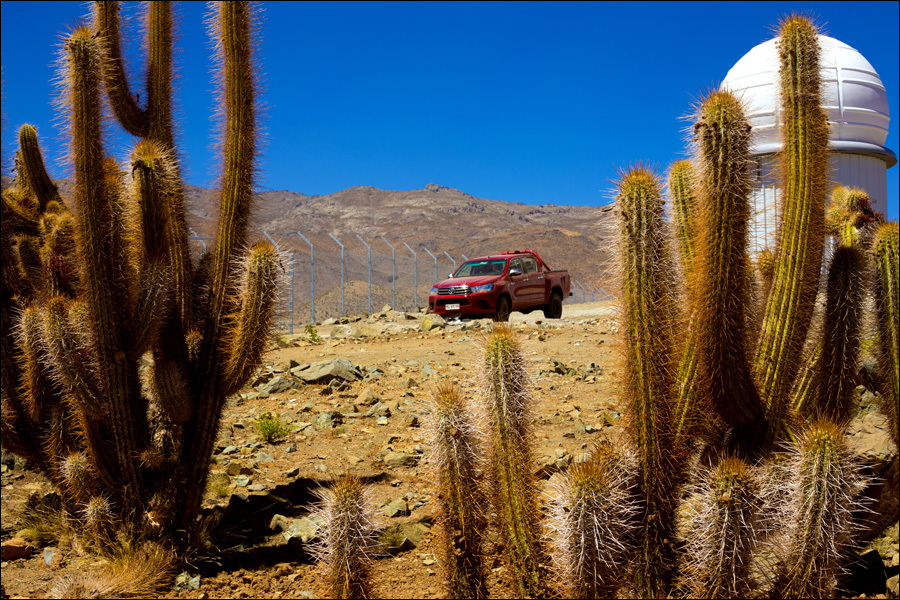
When you climb somewhere - the main thing is not to grab the cactus. Cacti are very durable - you can throw a stone of 10 kilograms from all over and it will bounce.
Every morning we got up an hour before breakfast, walked through the mountains, because then we went to the object and returned already in the dark. We saw goats sleeping. They simply lay in sun loungers and looked at the sky in the evenings.
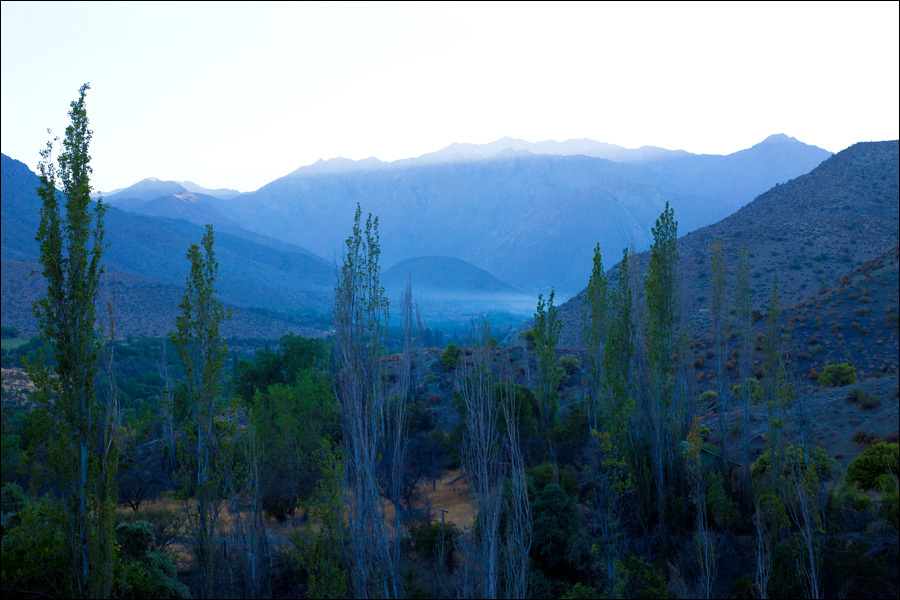
The hotel regularly wrapped food with us, but it was not enough, mostly - tasteless sandwiches and strange bars. Sandwiches lured eagles. More precisely, at first rodents came to the smell, and then eagles flew to the rodents. But the bars we gave the children a whole package later.
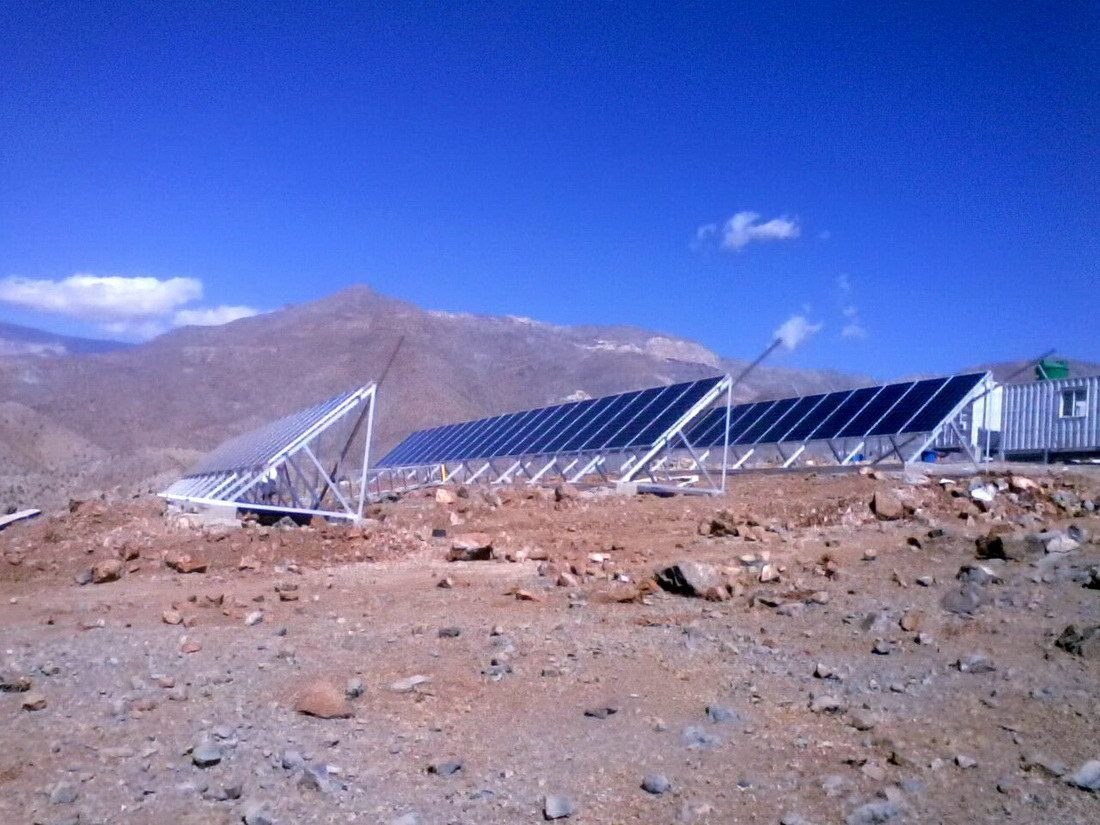
An array of solar panels, everything was done right and on a solid five - the technologies are very familiar to the region. Manufacturer LG.
Carlos, a local handyman, met us on the spot. He brought water, did good welding, carried various things. In low-power mode, Carlos built piles of stones.
It was necessary to do THAT DGU: it worked for more than 500 hours, replace the oil and filters, so that it continued to work. I had to scoop up a bunch of oil from where it should not be. As a result, the first week in the mountains we breathed diesel.

On the second day, hair dryers and heaters were hardly taken from the hotel, loaded up to a maximum of 13 kW, a lot of things flew out of it. 500 hours of almost idle work is harmful.
There is no wood in place, so we made tables and chairs from transport boxes.
There were many tasks. In addition to the cable broach mentioned above and diesel maintenance, it was necessary to mount video surveillance, connect different sensors, configure the automation and even fix the dome. Local mounted the large dome so that the disclosure was insufficient. Less than the project.

Height is 3 meters, it’s difficult to climb, there are no details, so they were cooked from what they found around and some mother. For 70 kilometers there are no bolts, magazines or tools.
Excavated mortgages. The locals helped us in this, they dig very well by hand. But should they think, they begin to collect stones and put them in piles. They speak Spanish, but with a terrifying rustling accent. Four days could not start laying. Cable brought your own:
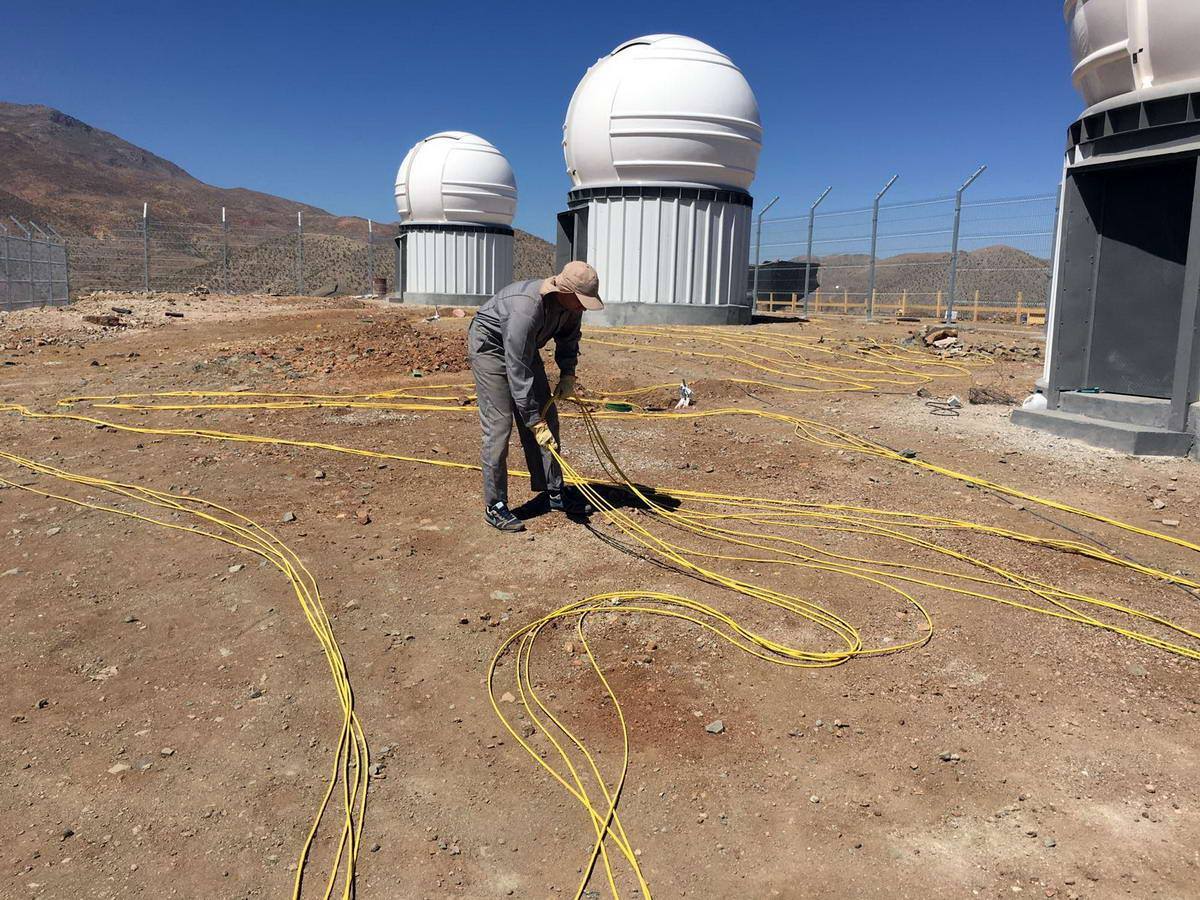

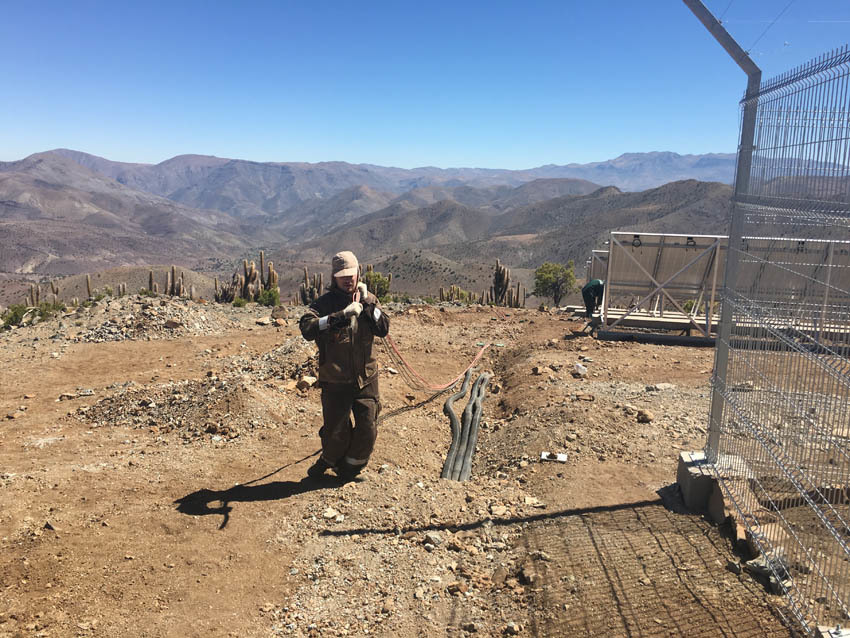
They exhausted a kilometer of the power cable; literally a couple of meters was not enough at the end. As a result, they bought extension cords in the valley, gutted them.
Up to each dome there were two lines of whiteness: measured out, laid out in zigzags so as not to wound, pulled through the wells. Well, Carlos remembered exactly where they were.
While stacking - the solariums left a whole tank.
Batteries were physically difficult to mount. One tier is 300 kilograms, and you can’t put it vertically in any case. Four rulers, total: a ton of two hundred batteries in a 2x2 meter room, where the four can’t turn around. Somehow laid:
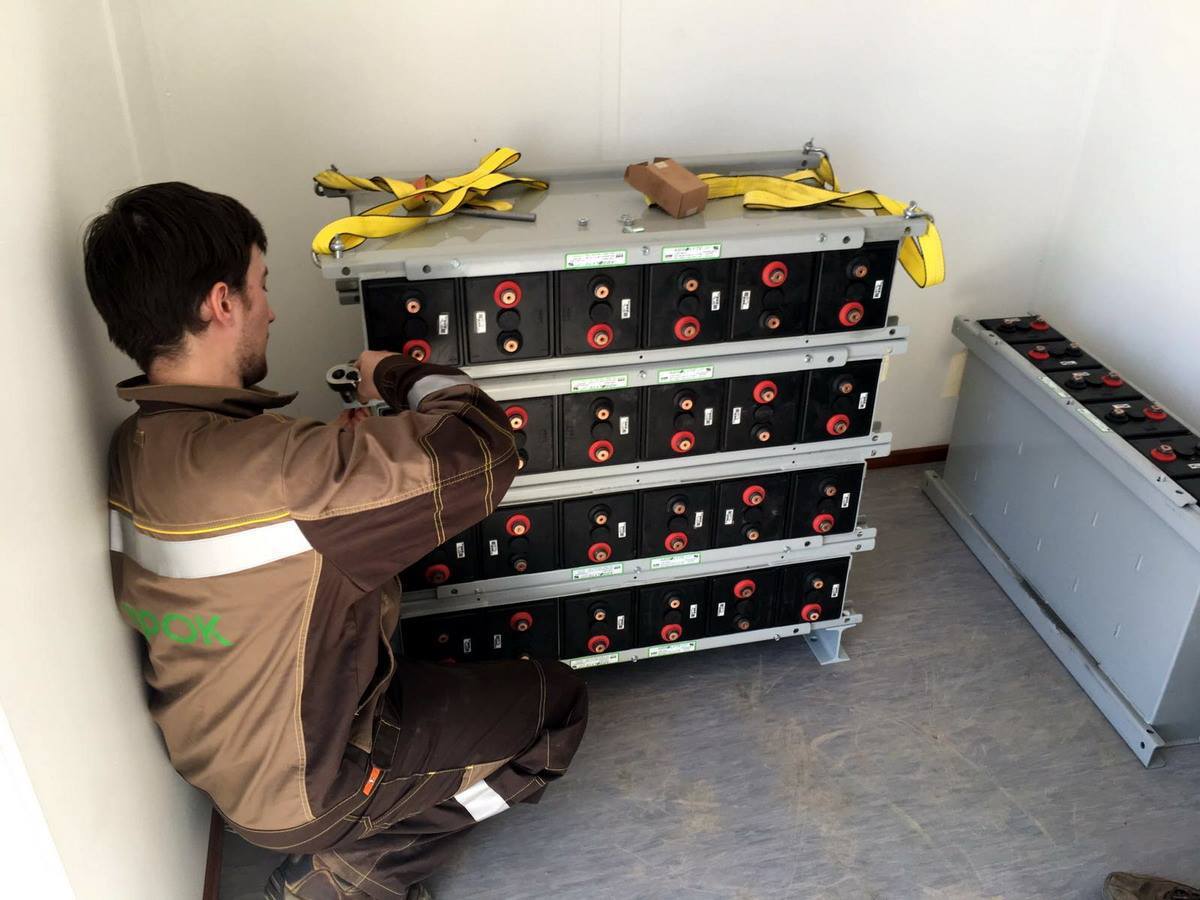
On February 23, we went for fuel, plus according to the list of what is missing, to the household store. This was our day off, the only one in three weeks. We bought meat, decided to make barbecue. We made it right in the parking lot. But in the end they didn’t fire it - it turns out that you can make fire on the beach only after 19:00. Ate already at the hotel. They didn’t find a USB extension cable - the locals simply don’t know what it is, and it was not on sale. There were no routers with an external antenna.
While bypassing the border of the beach on the water, they were scratched with stones to blood - the surf brings a small sharp fraction, it really hurts.

They later discovered that people here sometimes live right in campsites: satellite dishes, gas stoves. People on the beach just sit for weeks.

Mounted cooling and chambers:
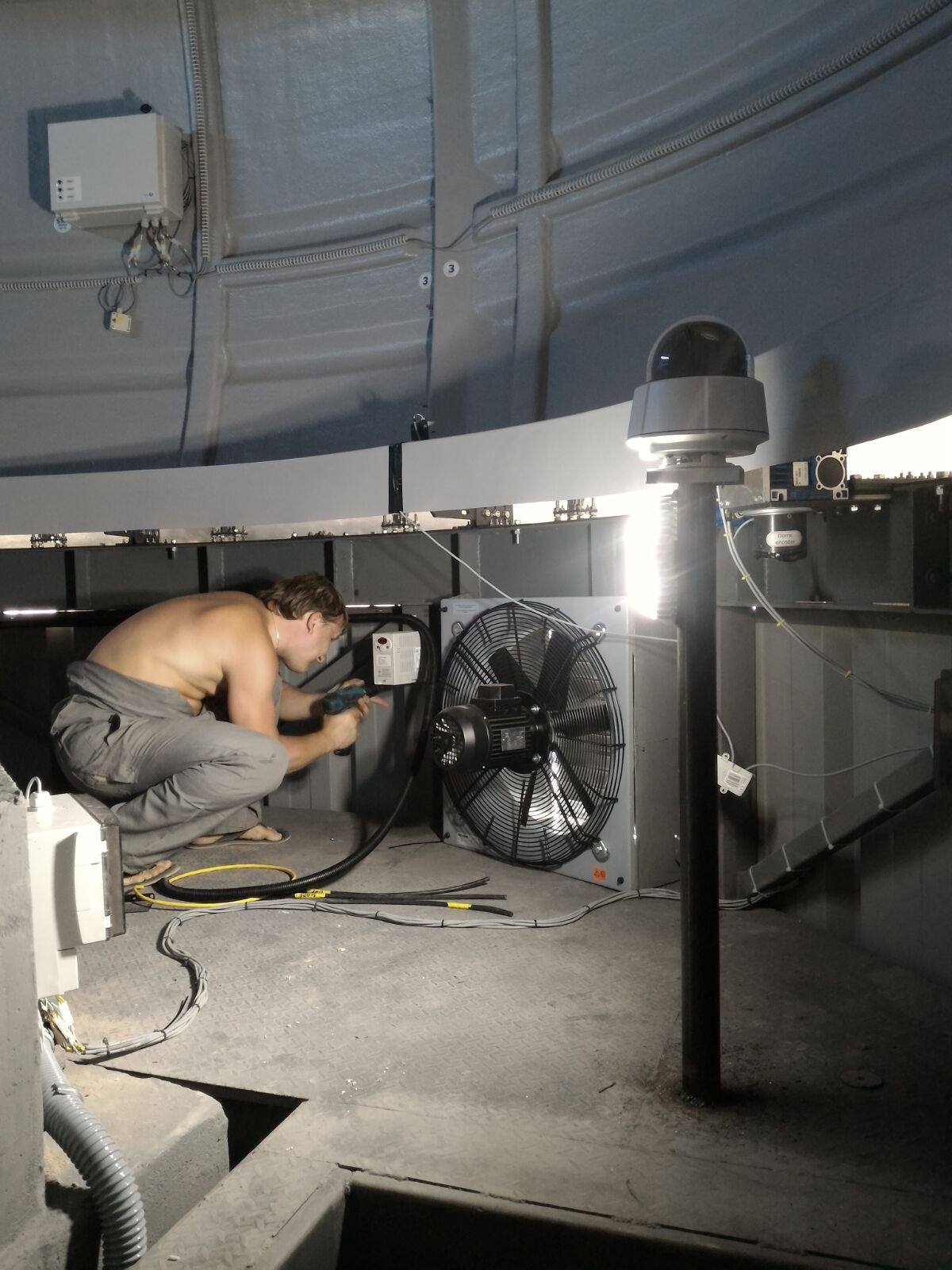
Made support:

The local contractor put the antenna:
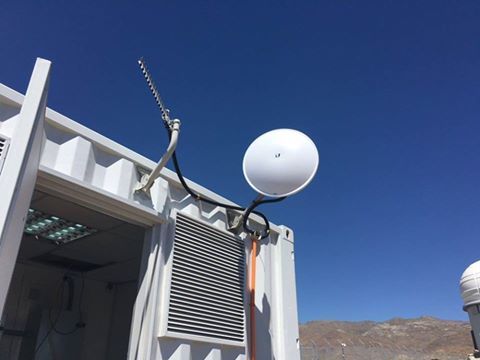
They put it “by eye”, they say, there is a base station over the hill, but everything went up right away.
Mounted the perimeter:

As a result, we made monitoring of the territory: entry and security, connected the camera in the server room to look at the rack, brought together temperature sensors (outdoor and indoor), two pieces per box. We set up an alarm system of the Watchdog type: depending on the availability of the Internet, the system rebooted routers, selected a channel, sent SMS about various crashes, looked at the availability of all the iron with regular pings. The same equipment for movement on cameras sent an alarm for penetration. And there were brought accidents and nutrition events. From a diesel engine and from a power stand. We configured the assembly and storage of logs on the server. Yes, the fanless industrial system unit is used for control.
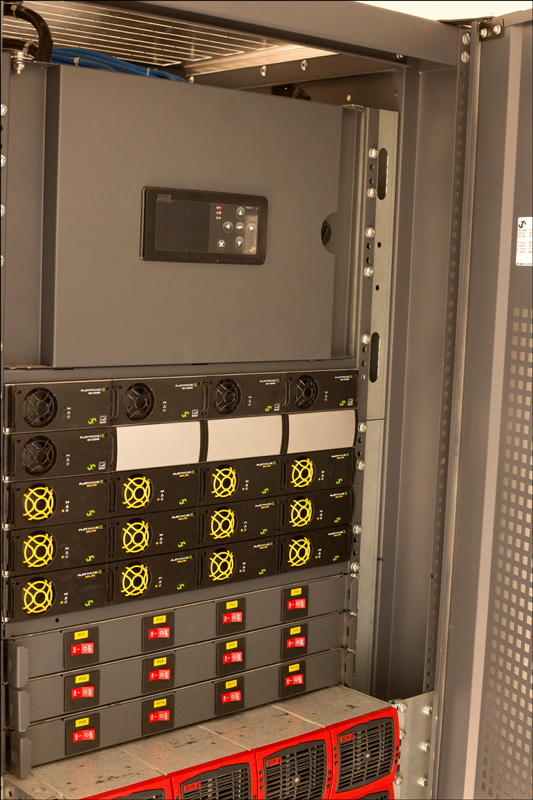
Rack
By the way, the sensors were mounted very simply, thanks to colleagues from the design. They forced the contractor to mount the plugs in their place or sculpt stickers at the installation site, so they did not mix anything up.
They got all the electrics. The most difficult was lightning protection. The place is very dry and ideal for a strike, plus lightning is frequent here. It was necessary to make protection from two sides, depending on where the lightning would strike - so that only half would burn out if something happened.
Communication - now from the entire site over the local network to the local server. The server is already communicating with a large network. In the future, there will be optics nearby, then radio relay from optics, but now LTE.
The telescope itself will be brought there just now, just the other day, if it has not yet been brought.

Our team: Alexei Padalko, Loco conductor and the brains of energy supply, I - Maxim Shirenin - was responsible for electricity, Igor Drozd, dome management, Kirill Nikolaev, dome management and communications (tsiskar).
the end
On the last day, just a few hours before our departure, another piece of iron arrived, which had to be mounted and checked. Finished already a minute per minute. When it was necessary to leave, suddenly dripped rain. We already knew that this threatens mudflows, and it will be very dangerous to get out. But, fortunately, it ended in a couple of minutes, and we left normally.
References:
- A forum thread about a 60-page telescope , where did I get the dome schemes.
- The telescope’s Facebook group , several photos (including the view of the domes before our arrival) from there.
- Many of our friends when viewing photos already asked how to get a job in our engineering team. So, I immediately warn you: Chile happens once a year, but Teplyy Klyuch, Aldan and other places with toxicomaniac bears , cold and lack of communication are much more common.
- My mail: MShirenin@croc.ru.
On the plane, still on the runway, they tried to sleep. When we left the gate, the pilots began to check, and the left engine did not start. We were informed about this in two languages. Alexei half-asleep received the information and said:
- I will not repair the engine, I do not have access.
